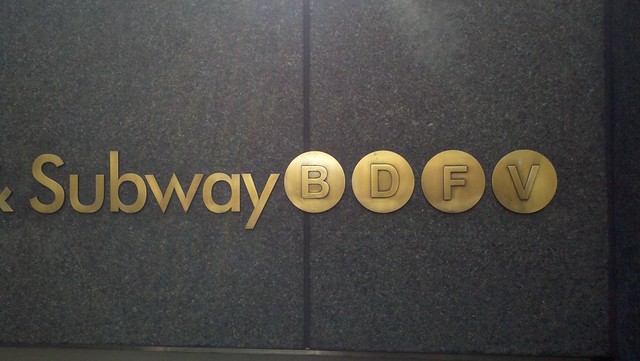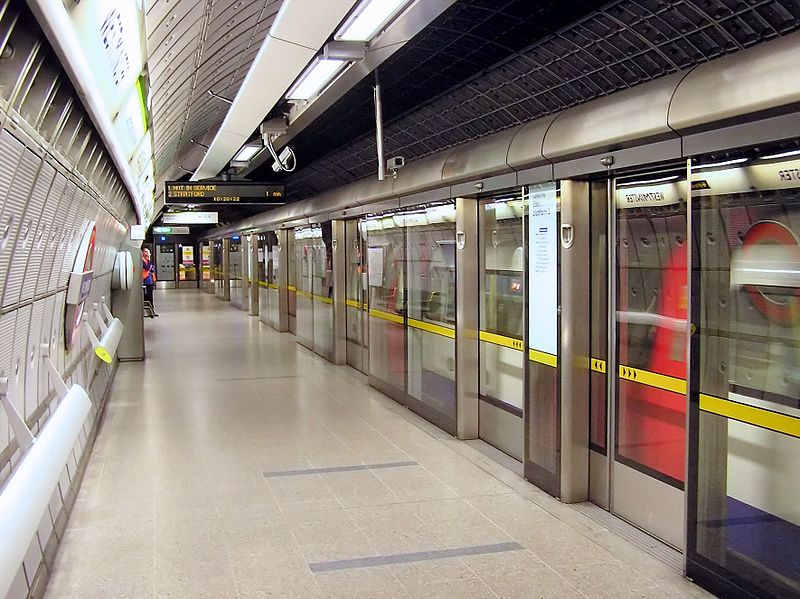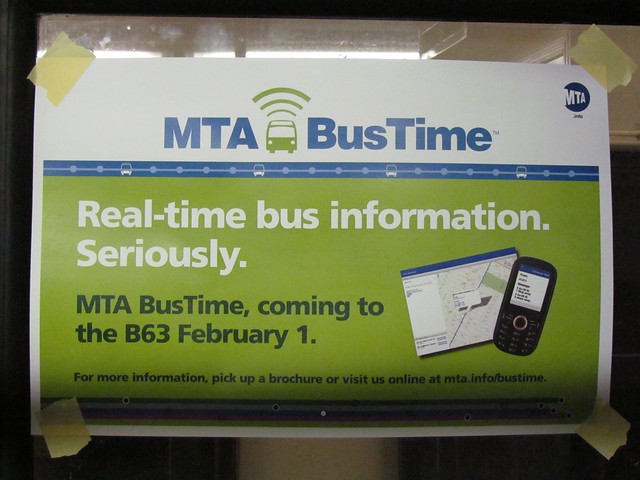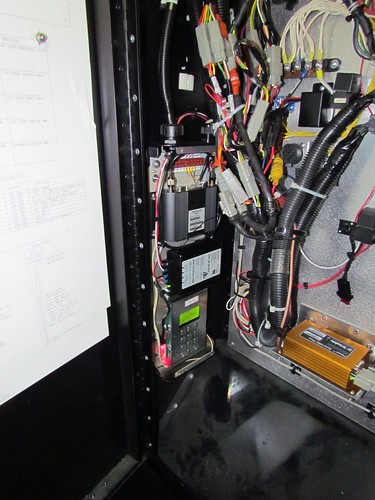Where: Above the stairway leading to the Rockefeller Center station complex on the southwest corner of 50th St. and 6th Ave.
What: The V train bullet, a remnant of the June service cuts, still lives while at this entrance, the M doesn’t stop here.
When: Monday, January 31, 2011, seven months after the V’s last run.
I’ve been interning twice a week in Midtown this semester, and the nearest entrance into and out of the Rockefeller Center complex is the on on the west side of 50th St. As I bounded down the staircase Wednesday evening, I saw a ghost — the V train lives. This Monday, I snapped a better picture of this rather ornate station entrance with our dearly departed V train bullet in all of its glory.
In a sense, this photo is all about nostalgia over lost train lines. While the name has changed — the M now runs on the V — the service pattern is actually better for the city. The rapidly expanding populations in Middle Village and South Williamsburg now have a direct route to midtown, and the new M train service over the Chrystie St. Cut has been a resounding success even as it represents a service cut along Brooklyn’s 4th Ave. and West End lines.
On the other hand, though, this photography is about the tension between the MTA and those private companies with which it contracts. For many entrances within buildings, the landlord is in charge of maintenance and upkeep. Those duties include updating fanciful signage, keeping escalators running and clearing the staircases of snow and ice. Yet, oftentimes, landlords don’t do what they must do. Entrances — such as the one at 52nd and 8th. Ave. — remain closed, and escalators remain closed forever, a fact to which anyone who uses Union Square can attest.
At Rockefeller Center, the system’s 14th busiest station and a tourist destination, this sign still says a train that hasn’t operated since June still stops there. Anyone expecting the V will be waiting a long time indeed.














